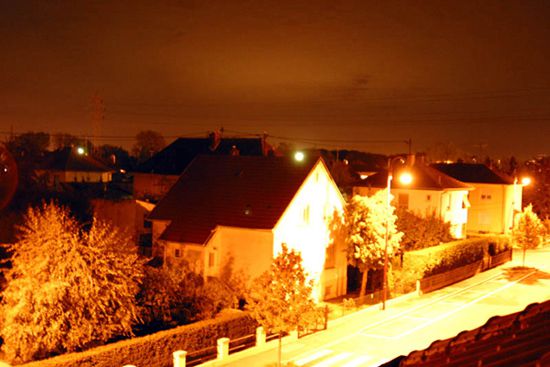-
 Marpol Convention
Marpol Convention
-
 Excision
Excision
-
 M 105
M 105
-
 Anther
Anther
-
 Encoding
Encoding
-
 Allosteric site
Allosteric site
-
 Circuit switched connection
Circuit switched connection
-
 Triglycerides
Triglycerides
-
 Ammonia
Ammonia
-
 Clinker
Clinker
-
 Temperature method
Temperature method
-
 Rhodopsin
Rhodopsin
-
 Vitamin B2
Vitamin B2
-
 Pumice
Pumice
-
 Genus
Genus
-
 Cryptography
Cryptography
-
 Vertebral column
Vertebral column
-
 ISP
ISP
-
 Positron
Positron
-
 Duchenne myopathy
Duchenne myopathy
-
 Bok globules
Bok globules
-
 Avian influenza
Avian influenza
-
 Map projection
Map projection
-
 Fluorescence microscope
Fluorescence microscope
-
 Gene
Gene
-
 Fentes alpines
Fentes alpines
-
 CGB
CGB
-
 ENVISAT
ENVISAT
-
 Public key
Public key
-
 Ice core
Ice core
Light pollution
Light pollution is excessive light production at night in an open environment, produced by man and leading to, decreased visibility of the surroundings. With regard to animals, light pollution can affect their biological rhythms, their nocturnal activities or their migration. Light pollution may affect people by altering biological rhythms and disturbing sleep. Moreover, it reduces visibility of the night sky, and in economic terms, represents useless spending when the light produced is directed towards the sky.
Public lighting is the main culprit. When a city is seen from a distance, the urbanised zone appears to be topped with an orange coloured gaseous dome (from sodium vapour lamps).
Astronomy and environmental defence organisations have brought this problem to the attention of city and town authorities. Better adapted lighting solutions considerably reduce light pollution and generate savings.
 Light from public lighting, when it is poorly designed (here, spherical lamps) sends a large amount of its light towards the sky, which diffuses in all directions, creating a halo. © Martial Figenwald
Light from public lighting, when it is poorly designed (here, spherical lamps) sends a large amount of its light towards the sky, which diffuses in all directions, creating a halo. © Martial Figenwald
Latest
Fill out my online form.



